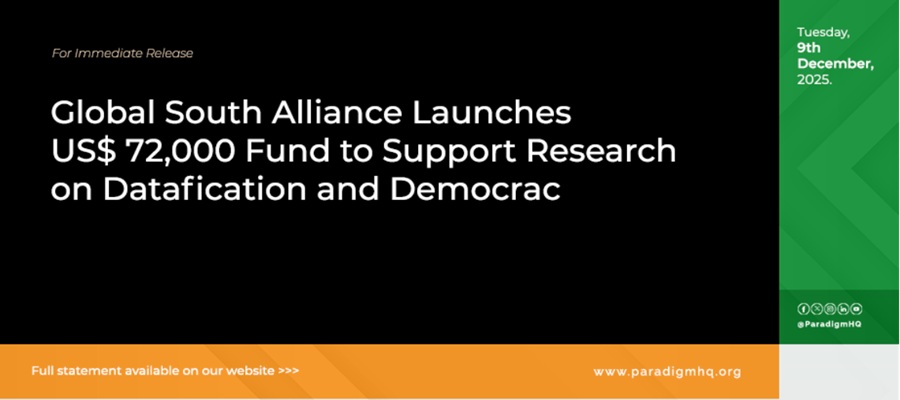Broadcasting
How to Become a Software Engineer – a Step-by-Step Guide

By: Prince Osinachi Nchiba
As a global authority in the software engineering space, I get asked a lot about how to become a software engineer. My career transition story proves that being a software engineer is not a far-thing. I am always excited when I speak to large gatherings of people and I reflect or share my story on my tech journey so far.

So let’s start with how I transitioned…
At the age of 13, I always wonder how our software engineers solve and fix some of the world’s biggest issues.
These situations piqued my interest and I started to research software engineering. I took a couple of courses and I developed myself till I was able to write my first line of code.
The most defining moment for me was when I got my first foreign remote job. I got more confident and delivered on many key projects. I have also been recognized as a software engineer leader by various organisations as a result of the successes I have recorded as a software engineer. Hence, this article will present a blueprint of how anyone can become what I am right now and start their software engineering journey.
Here are my suggestions for people looking to transition; I call it the LEF methodology. LEF is an acronym for Learn, Explore and Fly.

Step 1- LEARN
The first thing you need to do is learn. And learning involves education beyond the walls of a school. You need to learn the concepts and fundamentals behind a software. Here is my personal recommendation of courses you can take:
-ALX Africa’s Software Engineering Course: This is a Nigerian-based ed-tech platform. They offer a bouquet of digital learning solutions. I enjoyed their software engineering programme.
-Coursera’s Software Engineering Certification: This is a paid certification programme. It is globally renowned and they offer one of the best software engineering courses.
-Udemy’s Software Engineering Online Course: This is one of the easiest courses I have ever taken. They have one of the best resources and a rich library of information.
Another part of learning is joining software engineering communities and groups. Learning from peers is powerful. Here are some of the communities I would recommend:
-Google Developers Group: This is one of the largest developer communities in the world. They have a huge presence in Nigeria and I was a part of it.
-Hashnode: Hashnode is an online community where developers share knowledge and grow their careers. Developers from around the world participate in consequential discussions on Hashnode.
-StackOverflow: This is a tech community where you can ask all your questions about difficulties you face when coding.
Step 2- EXPLORE
Explore everything but carve a niche for yourself. As you know, software engineering involves three core aspects:
-Frontend: This involves building the interface and functionality users see. Examples of frontend languages are HTML, CSS, Javascript, React, Angular, Vue, jQuery, Swift, and so on.
-Backend: This aspect involves the behind-the-scenes of the application, that is the server, the database, etc. Examples of backend frameworks are Node.JS, Express.JS, Python, PHP, Java, Ruby, Golang, C#, SQL, etc.
-Mobile: This aspect involves the development of apps that phones use. The languages that can be used are React Native, Kotlin, C++, Flutter, etc.
Try to choose a segment to start with and narrow down on it. I have heard of people not knowing what to pick up. I would advise you to pick up from the basic frameworks before advancing to the advanced ones.
Step 3- FLY
This final part involves “taking action”.
Like a wise man once said, to fly, you have to run. Running here means you putting yourself out there. Here are the steps I advise you follow:
· Participate in hackathons.
· Work on personal projects.
· Build your portfolio.
· Share your milestones with the public (e.g your first deployment, etc).
· Apply for internship roles
· Brush up on interviews
· Get a mentor and be around industry authorities
These are just to mention a few. If you need help you can write to me here.
Broadcasting
Global South Alliance Launches $72,000 Datafication and Democracy Fund to Support 2026 Research Projects

The Global South Alliance, a coalition of 26 digital rights organizations, launched today the second edition of the “Datafication and Democracy Fund” on December 9.

Global South Alliance
The Fund will provide more US$ 72,000 to support research and advocacy projects focused on datafication and democracy to be implemented in 2026.
The Datafication and Democracy Fund was launched during the fourth edition of the Data Privacy Global Conference, organized in São Paulo, Brazil. The Global South Alliance is jointly managed by Data Privacy Brasil, Aapti Institute, and Paradigm Initiative.
The members are Asociación por los Derechos Civiles, Bolo Bhi, Center for Communication and Governance, CIPESA, Derechos Digitales, Digital Rights Foundation, Dukingire Isi Yacu, Internet Bolivia, Pollicy, Research ICT Africa, Fundación Multitudes, InternetLab, Thraets, Jokkolabs Banjul, Aláfia Lab, Centre for Policy Alternatives, KICTANET, Tech Global Institute, Freedom Forum, TEDIC, Digital Access, Center for AI and Tech Innovation for Democracy and Masaar.
The call for proposals is open to non-profit, non-governmental organizations based in the Global South working on digital rights and related public policy issues. Previously supported organizations have addressed topics such as online child protection, data governance in electoral processes, biometric technologies in stadiums and large events, mandatory biometric data collection of migrants, and discriminatory surveillance and datafication practices.
According to the launch announcement, the Datafication and Democracy Fund “aims to finance research and public policy analysis projects that address critical questions arising from the impact of datafication on democracy.” The Alliance emphasizes that “datafication is a deep and complex process of social transformation: it shapes the provision of public services mediated by information technologies, the emergence of digital public infrastructures, the data-driven nature of elections, the reconfiguration of markets and platforms, and many aspects of civic life. Beyond deliberative processes and elections, datafication exacerbates democratic challenges such as transparency, due process, and respect for citizens’ autonomy.”
Selected applicants will receive grants of up to US$ 8,000 to support their research projects. Depending on the proposals submitted, between 8 and 12 projects will be funded. All funded projects must be carried out during 2026.
Applicants are required to submit:
A one-page cover letter outlining the organization’s background, experience, and motivation for participating in the research program;
A proposal of up to five pages detailing the topic, scope, methodology, expected results, and relevance of the project to digital rights and democracy in the Global South;
A detailed budget, not exceeding US$ 8,000, specifying how resources will be allocated across the proposed project’s components.
Applications must be submitted in English by January 30th 2026, through the designated online form.
Broadcasting
End of an Era as Multichoice Delists from JSE After Canal+ Takeover

South Africa’s leading pay-TV operator, Multichoice, owner of DStv and Showmax, will officially delist from the Johannesburg Stock Exchange (JSE) this week following its acquisition by French media giant Canal+.

DStv
The delisting, scheduled to take effect on Wednesday, Dec. 10, 2025, also applies to Multichoice’s ordinary shares on the A2X Markets.
The move comes after Canal+ completed a Squeeze-Out of remaining shareholders, securing full ownership of the company after nearly two years of acquisition efforts.
According to the company, the delisting remains subject to regulatory approvals from the JSE, the A2X, and the South African Reserve Bank. Canal+ has pledged to comply with conditions set by South Africa’s competition authorities and intends to proceed with a secondary inward listing on the JSE within nine months of the delisting.
Founded in 1985 with the launch of M-Net, Multichoice has been a household name across Africa for four decades. It introduced DStv in 1995, expanded into multiple African markets, and launched its streaming platform, Showmax, in 2015.
In 2019, Multichoice was spun out of Naspers, South Africa’s most valuable company, and later began secondary trading on A2X in 2020.
The acquisition by Canal+ marks a significant shift in South Africa’s media landscape. Local investors will no longer be able to hold direct stakes in Multichoice, but will only gain indirect exposure once Canal+ completes its planned inward listing.
Industry analysts say the takeover underscores the growing consolidation in global media markets, with Canal+ strengthening its footprint across Africa through Multichoice’s extensive subscriber base and sports broadcasting rights via Supersport.
Broadcasting
How Nigerian Companies are Leading a More Responsible Digital Transformation

By Kehinde Ogundare, Country Head, Zoho Nigeria
Artificial intelligence is everywhere–in polished social media posts, in the recommendations that guide our viewing habits, and in the bots that handle customer queries before a human agent steps in. On LinkedIn, AI-assisted writing has become standard practice. A year ago, more than half of English long-form posts that went viral were estimated to have been written by or assisted by AI. If that’s the norm on the world’s biggest business network, it’s no surprise that AI is driving conversations in Nigerian boardrooms as companies move from experimentation to embedding AI into their daily operations.

Kehinde Ogundare, Country Head, Zoho Nigeria
Part of the package
The Nigeria Data Protection Act (NDPA), modelled on the European Union’s General Data Protection Regulation, together with the Nigeria Data Protection Commission, requires companies to build privacy into their systems from the outset rather than adding it later. This clear regulatory framework has evolved alongside a rapid rise in AI adoption.
New research from Zoho on responsible AI adoption highlights the impact of the regulations. As per the report, 93% of Nigerian companies have already started using AI in their daily operations; 84% have tightened their privacy controls after adoption, and 94% now have a dedicated privacy officer or team, which is well above global averages.
The survey, conducted by Arion Research LLC among 386 senior executives, shows just how deeply embedded AI has become in Nigeria. One in four companies already uses it across several departments, and nearly a third report advanced integration. Financial services firms are pioneers in this sector, using AI to automate client interactions, streamline operations and sharpen their marketing, while staying compliant with data protection rules.
The NDPA has helped make privacy part of business planning. Four in ten companies now spend more than 30% of their IT budgets on privacy. Regular audits, privacy impact assessments and explainability checks are becoming standard practice.
Skills, compliance and capacity
Rapid adoption brings challenges. More than a third of businesses say that their biggest obstacle is a lack of technical skills, and another 35% cite privacy and security risks. Instead of outsourcing, most are building capacity in-house: nearly 70% of companies are training staff in data analysis, more than half are improving general AI literacy, and 40% are investing in prompt engineering for generative tools.
The understanding of the NDPA regulation, which came into force in 2023, has also improved. 65% of organisations see compliance as essential. Many voluntarily apply data-minimisation and transparency standards even when not required to do so, aligning more closely with international norms and easing collaboration with global partners.
Privacy is increasingly influencing business decisions — from investment priorities to system design. Companies are asking tougher questions: is specific data essential? How can exposure be limited? How can fairness and transparency be proven?
Trusted systems
As privacy becomes part of how technology is built, companies are being more cautious about the tools they use because they now want systems that protect customer data, with clear boundaries between data and model training, straightforward controls, and reliable records for compliance teams.
Demand for business software that balances productivity with privacy is also growing. Zoho, among others, has seen strong customer growth as more organisations are looking for platforms that support responsible data handling.
The study identifies three main reasons behind AI adoption: to make work more efficient by automating routine tasks, to support better decision-making by identifying patterns sooner, and to improve customer engagement through faster, more relevant interactions. But none of this can succeed without trust. Nigeria’s experience shows that privacy and innovation can reinforce each other when they’re built together.
There’s still work to do because some industries are moving faster than others, and smaller businesses often face the biggest hurdles in time, cost and skills. Enforcement is also patchy; while the law is clear, application across sectors and geographies is a work in progress.
The next steps are more practical, requiring investment in skills – from data analysis and AI literacy to sector-specific training – and for governance to be put in place, with clear responsibilities, written policies, and a plan for managing errors or breaches. Privacy impact assessments should become part of every new system rollout, enabled by technology.
As AI becomes fundamental to doing business, Nigerian companies that build it carefully and responsibly will be better able to compete at home and abroad.

 General News3 days ago
General News3 days agoNiDCOM Launches Diaspora Startup Challenge to Boost Nigerian Talent

 News2 days ago
News2 days agoLagos Launches Tele-Vet, Nigeria’s First Veterinary Call Centre

 E-Financial3 days ago
E-Financial3 days agoCAC to Shut Down Unregistered PoS Operators by January 2026

 Telecom3 days ago
Telecom3 days agoNigeria Lacks AI-Ready Data Centres, Trails in Capacity – Nnamani

 Telecom3 days ago
Telecom3 days agoAnambra Leads Southeast in Digital Governance Under Soludo’s ICT Agenda

 General News3 days ago
General News3 days agoOptimus AI LABS CEO Showcases AI Breakthroughs in Nigeria’s Financial Sector

 General News3 days ago
General News3 days agoPromoPrint Rekindles Nigerian Resilience @ 25th Anniversary

 Telecom2 days ago
Telecom2 days agoNigeria Dominates 2025 TikTok Sub-Saharan Africa Awards with Six Wins


























